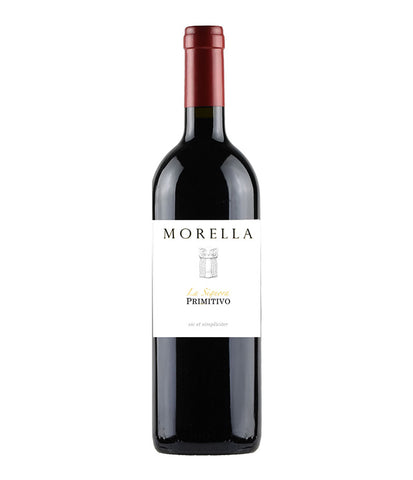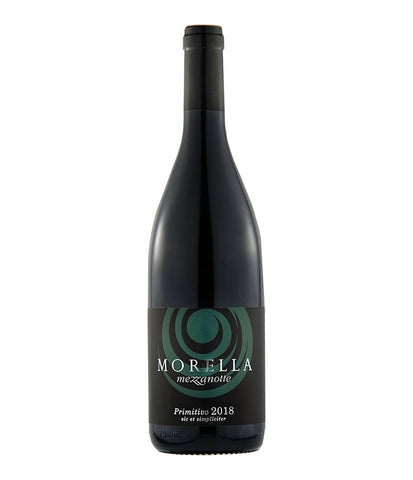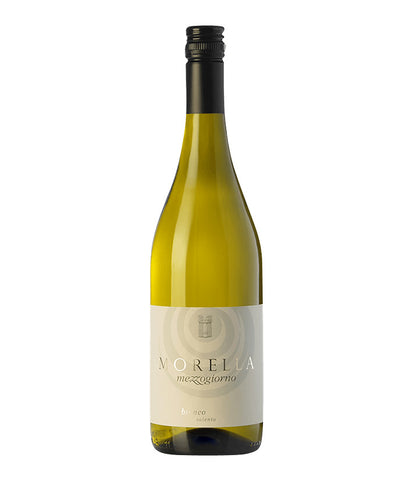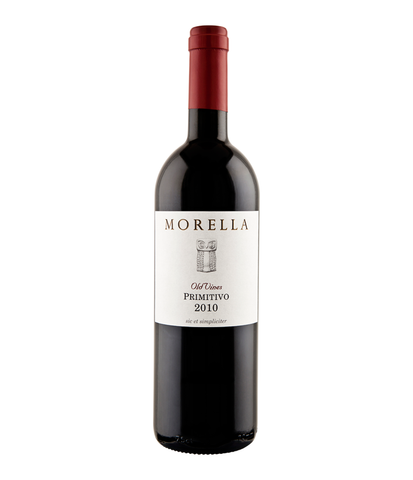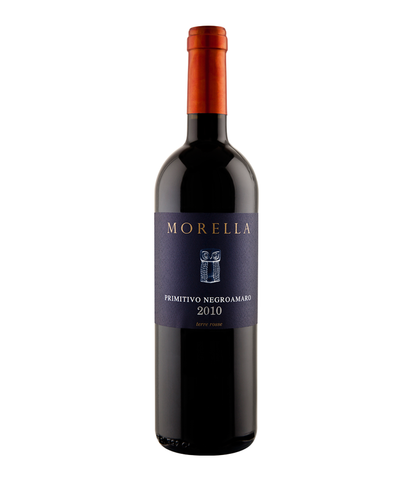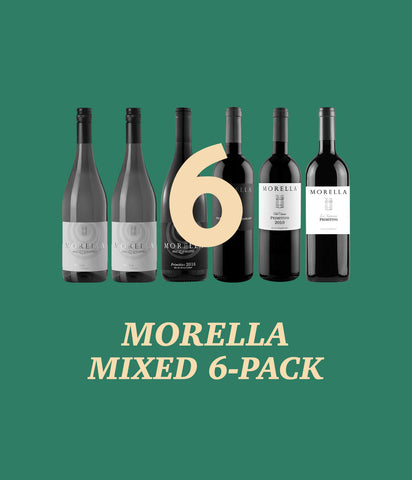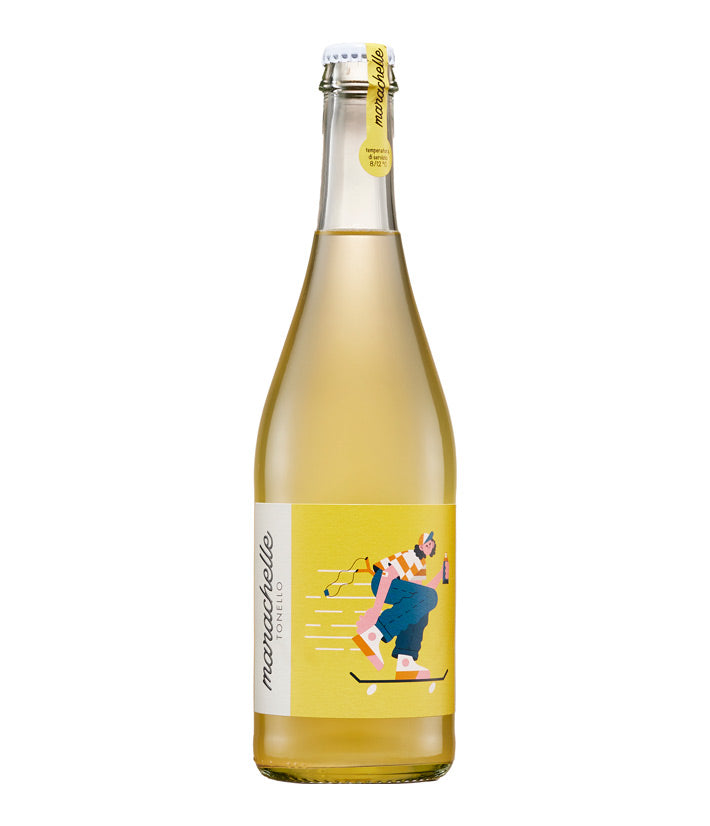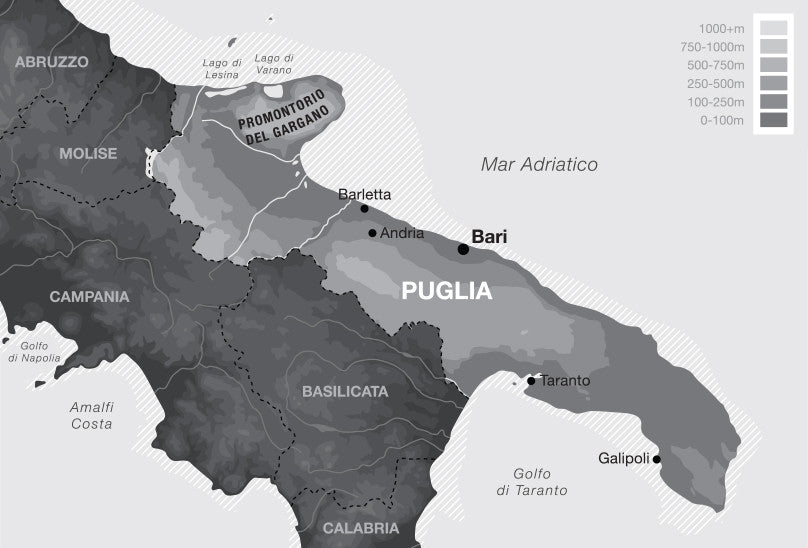
Puglia
Puglia is probably best known to travellers for the port cities of Brindisi and Bari. Many a tourist who has spent time in Italy's more glamorous areas have found themselves here for an hour or two, or perhaps overnight (if they miss their boat), before boarding a ferry to Greece. These cities have somewhat of a bad reputation, perhaps even rivalling the (probably now unfair) reputation that the French port of Marseille has garnered. The truth is that the beauty and character of Puglia is to be found outside these somewhat unkempt seaports and across the largely flat region that extends onto the Salento peninsula in the Ionian Sea and makes up the heel of Italy’s boot.
With its abundance of fertile plains and southern sunshine, Puglia is a powerhouse of agriculture; Mediterranean staples form the backbone with olives, tomatoes and wheat being favoured. Puglia has also historically produced wine in quantities that outstripped those of many nations, though today their output is a little more modest. ...READ MORE
Puglia
Puglia is probably best known to travellers for the port cities of Brindisi and Bari. Many a tourist who has spent time in Italy's more glamorous areas have found themselves here for an hour or two, or perhaps overnight (if they miss their boat), before boarding a ferry to Greece. These cities have somewhat of a bad reputation, perhaps even rivalling the (probably now unfair) reputation that the French port of Marseille has garnered. The truth is that the beauty and character of Puglia is to be found outside these somewhat unkempt seaports and across the largely flat region that extends onto the Salento peninsula in the Ionian Sea and makes up the heel of Italy’s boot.
With its abundance of fertile plains and southern sunshine, Puglia is a powerhouse of agriculture; Mediterranean staples form the backbone with olives, tomatoes and wheat being favoured. Puglia has also historically produced wine in quantities that outstripped those of many nations, though today their output is a little more modest.
While Puglia produces a considerable amount of white wine, it largely falls into a functional, rather than distinguished, category with non-traditional grapes accounting for some of the more revered cuvees. It is in red wine, and to some degree rosé, production that the most characterful and distinctive reflection of the region is to be found. Although Nero d’Troia is used in one of Puglia’s most famous wines, Castel del Monte, and provides an elegant counterpoint to other varieties, it has been, for now, marginalised by the focus on Negroamaro and Primitivo. Sadly, many old vines have been removed in an attempt by the EU to control excessive production, with confounding favouritism given to plantings of less maturity and quality potential, however, there are still many mature bush-trellised vineyards that produce fruit of incredible intensity, and with ever increasing focus, wines of real profundity. And it is with these inky, earthy and layered expressions of Negroamaro and Primitivo that Puglia is making its biggest impression.
Important denominations: Cacc’è Mmitte di Lucera DOC, Castel del Monte DOC, Castel del Monte Nero di Troia Riserva DOCG, Castel del Monte Rosso Riserva DOCG, Moscato di Trani DOC, Primitivo di Manduria DOC, Salice Salentino DOC
Important white varieties: Bombino Bianco, Fiano, Trebbiano, Verdeca
Important red varieties: Negroamaro, Nero di Troia (Uva di Troia), Primitivo, Sangiovese
COLLAPSE TEXT
- Page 1 of 1
-
- Page 1 of 1
-
